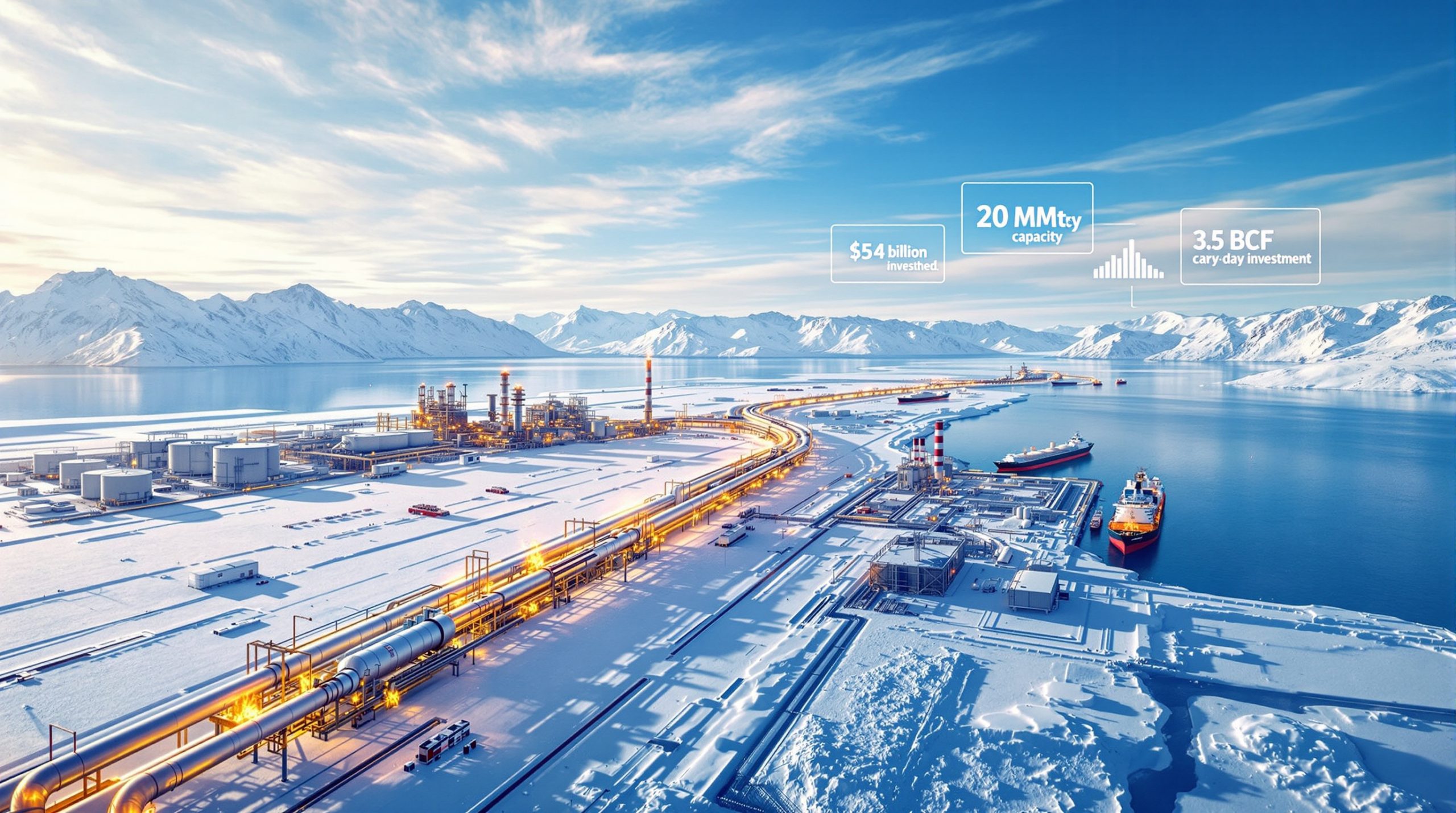Understanding Guinea's Mining Revolution
The Simandou iron ore project stands as one of Africa's most ambitious mining developments, combining exceptional mineral wealth with transformative infrastructure investment. This integrated operation encompasses world-class ore deposits, dedicated transportation networks, and export facilities that collectively reshape Guinea's economic landscape while addressing global steel industry demand.
Located in Guinea's remote southeastern highlands, the project demonstrates how modern mining ventures extend far beyond traditional extraction activities. The comprehensive approach integrates mining operations with railway construction, port development, and regional connectivity improvements that create lasting economic benefits.
Project Scale and Strategic Importance
Simandou Project Overview
| Component | Specification |
|---|---|
| Total Ore Reserves | 2.4 billion tonnes |
| Iron Content Grade | 65% Fe |
| Annual Capacity | 120 million tonnes |
| Railway Network | 650+ kilometers |
| Total Investment | $20+ billion |
| Employment Creation | 45,000+ positions |
| Infrastructure Legacy | Multi-use transport system |
Exceptional Ore Reserves Drive Global Interest
Guinea's Simandou deposit contains approximately 2.4 billion tonnes of high-grade iron ore, positioning it among the world's largest iron ore mines globally. The deposit's remarkable quality, averaging 65% iron content, places it within the premium-grade category that commands significant market advantages.
This exceptional grade reduces processing requirements compared to lower-grade alternatives, creating operational efficiencies throughout the steel production chain. Steel mills utilising high-grade ore experience improved blast furnace performance, reduced energy consumption per tonne of steel produced, and enhanced overall productivity metrics.
Reserve Distribution and Quality Analysis
The 2.4 billion tonne resource spans four distinct blocks, with Blocks 3 & 4 containing approximately 1.5 billion tonnes whilst Blocks 1 & 2 hold the remaining reserves. This distribution creates opportunities for phased development and diversified operational approaches across different management structures.
Comparative Global Positioning:
- Australian Pilbara deposits: Typically 64-67% Fe in premium products
- Brazilian Vale operations: Similar 65% Fe equivalent grades
- Simandou advantage: Concentrated high-grade resource in single location
The concentrated nature of Simandou's reserves provides distinct logistical advantages over dispersed mining regions. Unlike Australia's Pilbara, where multiple operators share existing infrastructure networks, Simandou operates as an integrated system optimised specifically for its ore characteristics and production requirements.
Reserve Life and Production Sustainability
At the planned annual capacity of 120 million tonnes, Simandou's 2.4 billion tonne resource provides approximately 20 years of continuous production. This substantial reserve life ensures long-term supply security for steel mill customers whilst justifying the significant infrastructure investments required for development.
Complex Ownership Structure Enables Development
The Simandou iron ore project operates through a sophisticated multi-stakeholder ownership model that balances international mining expertise, local government participation, and strategic capital investment from multiple sources.
Block Ownership Distribution
| Block | Primary Operator | Key Shareholders | Estimated Reserves |
|---|---|---|---|
| Blocks 3 & 4 | Rio Tinto SimFer JV | Rio Tinto (majority), Government of Guinea, Chalco Iron Ore Holdings | 1.5 billion tonnes |
| Blocks 1 & 2 | Winning Consortium Simandou | Winning International, Weiqiao Aluminium, United Mining, Baowu Resources | 0.9 billion tonnes |
Rio Tinto serves as the majority shareholder and managing partner for Blocks 3 & 4, providing operational control and technical expertise. The Government of Guinea maintains strategic ownership across all blocks, ensuring sovereign participation in the project's development and long-term benefits.
Chinese Investment and Strategic Partnerships
Chinese participation spans both operational blocks through different entities, reflecting significant Asian capital commitment to the project's success. Chalco Iron Ore Holdings (CIOH) participates in the Rio Tinto joint venture, whilst the Winning Consortium includes major Chinese industrial companies with integrated supply chain interests.
This Chinese involvement extends beyond financial participation to potential long-term offtake arrangements, providing market security for ore sales whilst supporting China's steel industry raw material requirements.
Key Partnership Benefits:
- Government ownership ensures policy alignment and local economic benefit
- International mining expertise provides technical and operational capabilities
- Chinese capital facilitates financing whilst securing potential market access
- Multi-stakeholder governance distributes development risks and rewards
Revolutionary Infrastructure Development
The Simandou iron ore project's infrastructure scope extends far beyond conventional mining operations, creating an integrated transport network that transforms Guinea's connectivity and economic potential.
Trans-Guinean Railway System
The project delivers more than 650 kilometers of new multi-use railway connecting the remote mining locations to coastal export facilities. This dedicated rail network represents one of Africa's most significant transportation infrastructure developments, designed to handle 120 million tonnes annually whilst supporting broader economic activities.
Railway System Advantages:
- Dedicated capacity: Optimised specifically for high-volume ore transport
- Multi-use design: Enables freight transport beyond mining operations
- Regional connectivity: Links interior regions to international markets
- Cost efficiency: Reduces transport costs compared to trucking alternatives
- Infrastructure legacy: Creates permanent transportation asset for Guinea
The multi-use designation enables the railway to support agricultural products, general freight, and potentially passenger services, extending economic benefits throughout Guinea's interior regions previously isolated from international markets.
Advanced Port Facilities at Forécariah
The coastal export infrastructure at Forécariah incorporates deep-water port capabilities designed for international bulk carrier access alongside flexible barge and transhipment systems.
Port Infrastructure Components:
- Deep-water access: Accommodates large international bulk carriers
- Barge loading systems: Enables flexible shipment configurations
- Transhipment capabilities: Supports vessel-to-vessel transfers
- Annual capacity: 120 million tonnes handling capability
- Strategic positioning: Atlantic Ocean location enables global market access
This integrated approach eliminates intermediate logistics steps that typically increase costs and reduce efficiency in mineral export operations. The direct mine-to-port connectivity through dedicated rail optimises ore flow whilst maintaining operational flexibility through multiple vessel loading options.
Operational Commencement and Production Timeline
Commercial operations at the Simandou iron ore project commenced in November 2025, marking successful transition from construction to active production phases. Furthermore, testing and commissioning activities demonstrate successful integration of mining, railway, and port infrastructure systems.
Current Operational Status
The celebration of operational commencement held at Forécariah port in November 2025 confirmed successful first ore transport via the 650+ kilometer railway from mine gate to export facilities. This milestone validates the integrated infrastructure design and establishes operational capability for commercial shipments.
Operational Achievements:
- ✓ Mine operations commenced successfully
- ✓ Railway transport completed from mine to port
- ✓ Port facility commissioning underway
- ✓ First ore delivery confirmed via integrated system
- ✓ Commercial shipment preparation in progress
Production Ramp-Up Strategy
The systematic approach to capacity expansion enables operational optimisation whilst meeting growing global demand for premium-grade iron ore.
2025-2026 Initial Phase:
- Mine production scaling and optimisation
- Railway operational efficiency improvements
- Port loading system refinement
- Initial commercial shipments to international markets
- Workforce expansion to full operational levels
2027+ Full Capacity Phase:
- Achievement of 120 million tonnes annual production
- Supply chain optimisation and cost reduction
- Market penetration across key steel-producing regions
- Infrastructure utilisation maximisation
This phased approach allows systematic resolution of operational challenges whilst building market relationships and establishing reliable supply patterns for steel mill customers worldwide.
Global Market Impact and Positioning
The Simandou iron ore project's entry into commercial production introduces 120 million tonnes annually of premium-grade ore to global markets, representing approximately 8% of total seaborne iron ore trade. This substantial supply addition creates significant implications for global iron ore demand insights and steel industry raw material procurement strategies.
Premium Grade Market Positioning
The project's 65% iron content positions Simandou ore within the premium segment of global iron ore markets, where quality commands significant price premiums over lower-grade alternatives.
Quality Advantages for Steel Producers:
- Reduced processing requirements: Higher iron content reduces beneficiation needs
- Improved blast furnace efficiency: Enhanced productivity and throughput
- Lower energy consumption: Reduced fuel requirements per tonne of steel
- Environmental benefits: Decreased carbon emissions through efficiency gains
- Cost optimisation: Reduced raw material processing and handling costs
Geographic Market Access
Simandou's Atlantic Ocean positioning through Forécariah port provides strategic advantages for accessing diverse global steel markets compared to traditional suppliers concentrated in specific regions.
Primary Market Opportunities:
- Asian steel centres: China, Japan, South Korea, India
- European markets: Germany, Italy, Turkey, United Kingdom
- Emerging economies: Southeast Asia, Middle East, Africa
- Americas: Brazil, United States, Mexico
This geographic flexibility enables market diversification strategies that reduce dependence on single regional demand patterns whilst optimising shipping routes based on global steel production requirements.
Supply Chain Diversification Benefits
Steel producers increasingly prioritise supply source diversification to enhance security and competitive positioning. Simandou provides an alternative to established suppliers, offering both geographic and operational diversity within premium-grade ore procurement strategies.
Economic Transformation for Guinea
The Simandou iron ore project represents Guinea's largest industrial development, creating economic opportunities extending far beyond direct mining activities through employment generation, infrastructure development, and broader economic multiplier effects.
Employment and Skills Development
Direct employment exceeds 45,000 positions across mining operations, railway management, port facilities, and supporting services. This employment creation occurs in a country where large-scale industrial opportunities have been historically limited.
Employment Categories:
- Mining operations: Equipment operators, maintenance technicians, supervisors
- Railway operations: Train operators, track maintenance, logistics coordination
- Port facilities: Loading operators, maritime services, administrative support
- Support services: Security, catering, transportation, medical services
- Management positions: Engineering, finance, human resources, operations
The project's workforce development includes comprehensive training programmes that create transferable skills for Guinea's broader economic development beyond the mining sector.
Infrastructure Legacy and Economic Multiplier Effects
The permanent infrastructure created through Simandou development provides lasting economic benefits that extend throughout Guinea's economy.
Long-term Infrastructure Assets:
- Railway network: Permanent transportation system for future development
- Port facilities: International trade capability for diverse commodities
- Power generation: Electrical infrastructure supporting regional development
- Telecommunications: Digital connectivity improvements
- Roads and utilities: Supporting infrastructure for communities and businesses
These infrastructure improvements enable economic activities previously impossible due to transportation and connectivity limitations, creating opportunities in agriculture, manufacturing, and services sectors.
Revenue Generation and Government Benefits
Government participation in ownership structures ensures Guinea receives direct benefits from mining operations whilst the infrastructure development creates platforms for broader economic growth.
Government Revenue Sources:
- Ownership stakes in mining operations
- Tax revenue from corporate and individual income
- Royalty payments on mineral extraction
- Export duties and customs revenue
- Economic activity from indirect job creation
Environmental and Social Responsibility Framework
Modern mining practices and international standards guide environmental management throughout the Simandou iron ore project's development and operations, addressing both local community needs and global sustainability expectations.
Community Development Initiatives
The project implements comprehensive social investment programmes designed to create lasting benefits for local communities affected by mining operations and infrastructure development.
Social Investment Programmes:
- Education infrastructure: School construction and equipment provision
- Healthcare facilities: Medical clinics and health service expansion
- Agricultural development: Farming technique improvement and market access
- Water and sanitation: Clean water access and waste management systems
- Local business support: Supply chain participation and skills training
These initiatives create sustainable improvements in living standards whilst building positive relationships between mining operations and local communities.
Environmental Management and Monitoring
The project employs comprehensive environmental monitoring and mitigation strategies that address the unique ecological characteristics of Guinea's southeastern highlands region.
Environmental Management Components:
- Biodiversity protection: Wildlife habitat preservation and restoration
- Water resource management: Quality monitoring and conservation measures
- Land rehabilitation: Post-mining restoration and revegetation programmes
- Air quality control: Dust suppression and emission monitoring
- Waste management: Responsible disposal and recycling programmes
These environmental protections reflect international best practices whilst addressing specific local ecological requirements and community concerns.
Overcoming Historical Development Challenges
The path to operational commencement involved navigating complex obstacles that have delayed many large-scale African mining developments, demonstrating the importance of stakeholder alignment and sustained commitment.
Historical Obstacles and Resolution Strategies
Previous development attempts faced significant challenges that required innovative solutions and persistent stakeholder engagement to resolve.
Key Challenge Areas:
- Political stability: Government transitions and policy consistency requirements
- Ownership disputes: Complex stakeholder negotiations and agreement structures
- Infrastructure financing: Securing multi-billion dollar investment commitments
- Technical complexity: Remote location and massive scale engineering challenges
- Regulatory framework: Mining law development and implementation
Success Factors and Breakthrough Solutions
Recent progress reflects improved stakeholder alignment, stable political environment, and proven technical solutions addressing the project's unique development requirements.
Critical Success Elements:
- Multi-stakeholder governance: Balanced ownership structures aligning interests
- Government support: Consistent policy framework and partnership commitment
- Technical expertise: Proven mining company capabilities and experience
- Financial backing: Adequate capital commitment from multiple sources
- Infrastructure integration: Comprehensive approach addressing all logistical requirements
The successful transition to operations demonstrates how persistence, appropriate partnerships, and comprehensive planning can overcome seemingly insurmountable development obstacles in challenging environments.
Strategic Importance for Global Steel Industry
High-grade iron ore becomes increasingly valuable as steel producers optimise efficiency and reduce environmental impact through superior raw material inputs, creating growing demand for premium-grade deposits like Simandou. In addition, current iron ore price trends reflect this structural shift towards quality premiums.
Decarbonisation and Efficiency Trends
Global steel industry decarbonisation efforts create increasing demand for high-grade iron ore that reduces energy consumption and carbon emissions per tonne of steel produced.
Industry Trends Supporting Premium Ore Demand:
- Energy efficiency mandates: Regulatory requirements for reduced energy consumption
- Carbon pricing mechanisms: Financial incentives for emissions reduction
- Environmental regulations: Stricter air quality and emissions standards
- Corporate sustainability commitments: Steel company environmental targets
- Technology advancement: Improved blast furnace designs optimised for high-grade ore
These trends create structural demand growth for premium-grade ore that commands significant price premiums over lower-grade alternatives.
Supply Security and Risk Management
Steel producers increasingly prioritise supply chain diversification to manage geopolitical risks and ensure consistent raw material availability for production operations.
Supply Chain Risk Factors:
- Geographic concentration: Dependence on limited supplier regions
- Political instability: Disruption risks in key producing countries
- Transportation constraints: Shipping route and port capacity limitations
- Weather disruptions: Seasonal impacts on mining and transportation
- Market concentration: Limited number of major suppliers
Simandou addresses these concerns by providing high-grade ore from a politically stable source with dedicated infrastructure that reduces transportation risks whilst offering competitive alternatives to established suppliers.
Future Development Opportunities and Expansion
Long-term expansion possibilities extend beyond current operational parameters through additional block development, infrastructure enhancements, and value-added processing capabilities that could multiply economic benefits.
Expansion Potential and Growth Strategies
The comprehensive infrastructure created for initial operations provides platforms for future development that could significantly increase production capacity and economic impact.
Future Development Possibilities:
- Additional block development: Expansion beyond current Blocks 1-4
- Processing facility construction: Value-added products and beneficiation
- Railway capacity expansion: Increased throughput for higher production
- Port facility upgrades: Larger vessel accommodation and handling capacity
- Regional mining development: Support for other mineral projects using infrastructure
Technology Integration and Innovation
Advanced mining technologies, automation systems, and digital optimisation continue evolving throughout operational life, maintaining competitive advantages and operational excellence.
Technology Development Areas:
- Autonomous mining equipment: Reduced labour costs and improved safety
- Predictive maintenance systems: Equipment reliability and operational efficiency
- Digital supply chain optimisation: Real-time logistics coordination and planning
- Environmental monitoring technology: Enhanced compliance and impact mitigation
- Processing optimisation: Improved ore quality and recovery rates
These technological advances position Simandou as a leading example of modern mining operations that integrate efficiency, sustainability, and economic optimisation.
Transformative Impact on African Mining Development
The Simandou iron ore project exemplifies comprehensive mining development that combines exceptional mineral resources with transformative infrastructure investment, creating a model for future resource development across Africa and other challenging locations worldwide. Furthermore, this project reflects broader mining industry evolution trends towards integrated development approaches.
The successful transition to commercial production validates integrated approaches that address mining, transportation, and export infrastructure as unified systems rather than separate components. This comprehensive strategy proves essential for unlocking previously inaccessible mineral wealth in remote locations whilst creating sustainable economic development.
For Guinea, Simandou represents economic transformation through industrial development that extends far beyond resource extraction to include employment creation, infrastructure legacy, and economic sovereignty enhancement. However, the project demonstrates how strategic partnerships between international companies, local governments, and financial institutions can achieve complex development goals whilst distributing benefits across multiple stakeholders.
The project's global significance extends to steel industry supply chain diversification and premium-grade ore availability that supports decarbonisation efforts and efficiency improvements. As global steel demand continues growing, particularly in developing economies, Simandou's production provides essential supply security and quality advantages that strengthen international commodity markets.
The infrastructure legacy created through railway, port, and utility development provides permanent economic assets that enable future opportunities in mining, agriculture, manufacturing, and trade that would otherwise remain impossible due to transportation and connectivity limitations. Consequently, this approach may influence mining consolidation trends and partnership structures across the industry.
"The successful transition to operations demonstrates how persistence, appropriate partnerships, and comprehensive planning can overcome seemingly insurmountable development obstacles in challenging environments."
Disclaimer: This analysis is based on publicly available information and industry reports. Mining operations involve inherent risks including commodity price volatility, operational challenges, and regulatory changes that may affect project performance and economic outcomes.
Could Simandou Signal New Opportunities in African Mining?
Guinea's transformative Simandou iron ore project demonstrates how integrated mining developments create exceptional value, much like the discoveries tracked by Discovery Alert's proprietary Discovery IQ model on the ASX. Stay ahead of emerging opportunities by exploring Discovery Alert's discoveries page, showcasing how major mineral finds can generate substantial returns, and begin your 30-day free trial today to position yourself ahead of the market.




